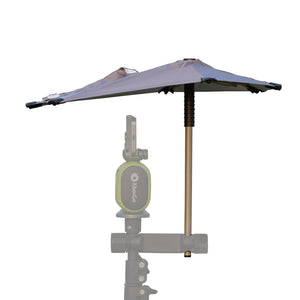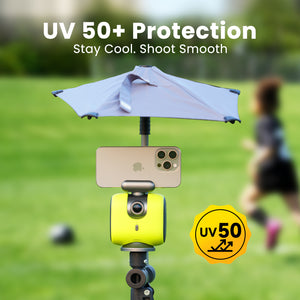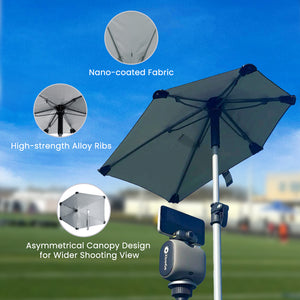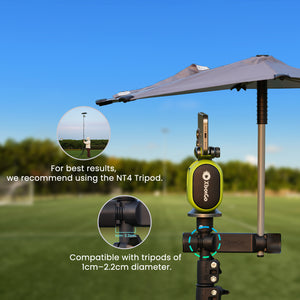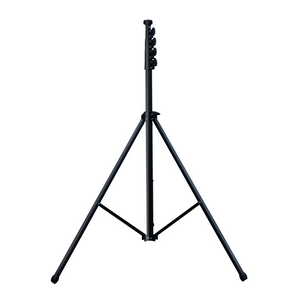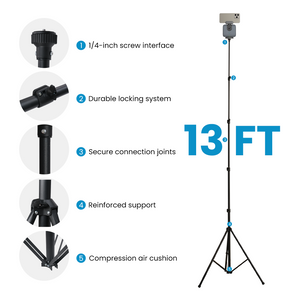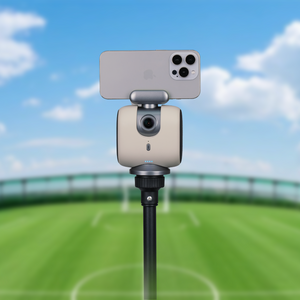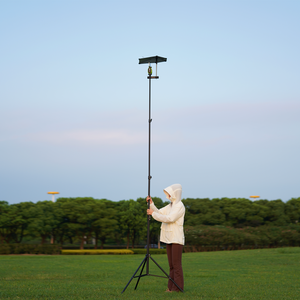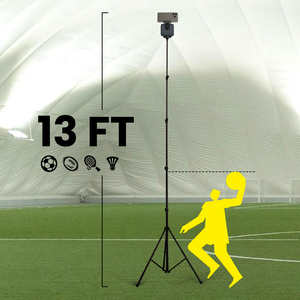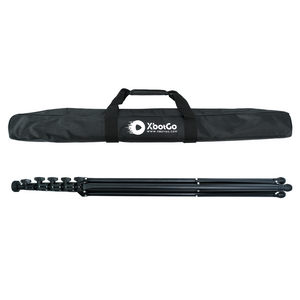XbotGo Chameleon AI Sports Camera
Soccer Rules Explained: The Complete Guide
Whether you're watching your first World Cup match or stepping onto a local field for weekend play, understanding soccer's rules transforms confusion into appreciation. While millions worldwide claim soccer as "the beautiful game," its beauty often gets lost when a referee's whistle interrupts play for reasons that seem mysterious to newcomers.
This comprehensive guide demystifies soccer's 17 Laws of the Game, addressing not just what the rules state, but why they exist and how they're actually applied in real matches. From the notorious offside rule that sparks heated debates in living rooms worldwide to the subtle nuances of handball decisions that even seasoned fans struggle to grasp, we'll explore the regulations that govern the world's most popular sport.
The Essential Framework: Soccer's 17 Laws
Soccer operates under 17 fundamental laws maintained by the International Football Association Board (IFAB). These laws create a universal language for the sport, ensuring a youth match in Kansas follows the same basic principles as the Champions League final. Let's explore the most crucial elements that shape every soccer match.
The Playing Field and Basic Setup
Every soccer match begins with standardized elements that create fair competition. The rectangular field stretches between 100-130 yards in length and 50-100 yards in width, marked with distinctive white lines that define play areas. The goal areas extend 6 yards from each post, while the penalty areas—those crucial 18-yard boxes—determine where goalkeepers can use their hands and where fouls result in penalty kicks.
The ball itself must meet specific standards: spherical, made of leather or similar material, with a circumference of 27-28 inches. This consistency ensures players worldwide develop skills transferable to any match situation.
Team Composition and Player Roles
Each team fields 11 players, including one goalkeeper who enjoys the unique privilege of using hands within the penalty area. Modern rules allow five substitutions during regular play, increased from three to reduce injury risks and maintain match intensity. However, once substituted, players cannot return—a rule that adds strategic depth to coaching decisions.
Teams must maintain at least seven players to continue a match. If injuries, red cards, or other circumstances reduce a team below this threshold, the referee must abandon the game.
Core Gameplay: The Flow of Soccer
Starting Play and Restarts
Every match begins with a kickoff from the center circle, with the ball needing to move forward to start play. After goals, play resumes with another kickoff by the team that conceded. These moments represent soccer's continuous nature—unlike many sports, the clock keeps running.
When the ball leaves the field, different restart methods apply:
- Throw-ins occur when the ball crosses the sideline, awarded to the team that didn't touch it last
- Corner kicks happen when defenders last touch the ball before it crosses their own goal line
- Goal kicks result when attackers send the ball over the goal line without scoring
The Fundamental "No Hands" Rule
Soccer's defining characteristic separates it from other football codes: players cannot use their hands or arms to control the ball. Only goalkeepers, within their penalty area, enjoy this privilege—but even they face restrictions. Goalkeepers cannot handle deliberate back-passes from teammates or throw-ins, rules introduced to prevent time-wasting and maintain game flow.
The six-second rule further limits goalkeeper ball handling, though referees rarely enforce this strictly unless keepers obviously waste time.
Offside: Soccer's Most Debated Rule
No rule generates more controversy or confusion than offside. At its core, offside prevents players from camping near the opponent's goal, waiting for easy scoring opportunities. Yet its application creates countless debates.
Understanding Offside Position
A player occupies an offside position when:
- They're in the opponent's half of the field
- They're closer to the goal line than both the ball and the second-to-last opponent (usually the last defender, as the goalkeeper is typically furthest back)
- A teammate plays the ball to them
Crucially, being in an offside position isn't automatically an offense. The player must be actively involved in play by:
- Playing or touching the ball
- Interfering with an opponent
- Gaining an advantage from their position
Offside Exceptions
Players cannot be offside when receiving the ball directly from:
- Throw-ins
- Corner kicks
- Goal kicks
Additionally, players level with or behind the ball when it's played cannot be offside, regardless of defender positions.
Why Offside Matters
Without offside, soccer would devolve into long-ball contests with strikers permanently stationed by opposing goals. The rule encourages team movement, tactical sophistication, and skillful buildup play—elements that make soccer "beautiful" rather than merely functional.
Fouls, Free Kicks, and the Disciplinary System
Direct vs. Indirect Free Kicks
Soccer distinguishes between two free kick types based on offense severity:
Direct free kicks (including penalties when fouls occur in the penalty area) result from:
- Kicking, tripping, or attempting to kick/trip opponents
- Pushing, holding, or striking opponents
- Handball violations (except by goalkeepers in their area)
- Reckless or dangerous challenges
Indirect free kicks arise from:
- Dangerous play without contact
- Impeding opponents
- Goalkeeper violations (holding ball too long, handling back-passes)
- Offside infractions
The Card System: Managing Player Behavior
Referees use colored cards to maintain match control and player safety:
Yellow cards serve as cautions for:
- Unsporting behavior (including simulation/diving)
- Dissent by word or action
- Persistent fouling
- Delaying the restart of play
- Failing to respect required distance on free kicks
- Entering/leaving the field without permission
Red cards remove players for:
- Serious foul play
- Violent conduct
- Spitting at anyone
- Offensive, insulting, or abusive language/gestures
- Receiving a second yellow card
- Denying obvious goal-scoring opportunities through fouls or deliberate handballs
Players receiving red cards must leave the field immediately and cannot be replaced, forcing their team to continue with fewer players—a significant tactical disadvantage.
Handball: The Rule Everyone Thinks They Understand
Perhaps no rule causes more confusion than handball. Many fans believe any ball-to-hand contact constitutes a foul, but the law requires more nuance. Referees must determine whether the contact was deliberate, considering:
- Hand/arm position relative to body movement
- Distance between opponent and ball (time to react)
- Whether the player made their body "unnaturally bigger"
- If the hand/arm position was justifiable for that specific movement
Recent clarifications state that handball occurs when players touch the ball with hands/arms that make their body unnaturally bigger or are above shoulder height. However, players won't be penalized if the ball deflects off their own body or a nearby player before hitting their hand, provided the hand position was natural.
Modern Technology: VAR and Goal-Line Systems
Video Assistant Referee (VAR)
Introduced to eliminate clear and obvious errors, VAR reviews four specific situations:
- Goals and offenses in the buildup
- Penalty decisions
- Direct red card incidents
- Mistaken identity in disciplinary actions
VAR's implementation varies by competition, but the protocol remains consistent: minimal interference unless there's a clear and obvious error. Despite intentions to improve accuracy, VAR generates controversy through lengthy reviews and millimeter offside decisions that some argue violate soccer's flowing spirit.
Goal-Line Technology
Unlike VAR's subjective elements, goal-line technology provides definitive answers about whether the ball fully crossed the line. Sensors in the ball and around the goal instantly alert referees through watch vibrations when goals occur, eliminating disputed "ghost goals."
Time, Substitutions, and Match Management
The Running Clock Controversy
Unlike most major sports, soccer's clock runs continuously. Referees track stoppages for injuries, substitutions, and other delays, adding this "stoppage time" at each half's end. This system creates strategic elements—leading teams often slow play to preserve advantages—but also generates controversy when stoppage time seems insufficient or excessive.
Substitution Strategy
Modern soccer allows five substitutions (increased from three during COVID-19 and made permanent in 2022), but teams can only stop play three times for substitutions (halftime doesn't count). This limitation prevents excessive disruption while allowing player rotation for safety and tactical flexibility.
Concussion substitutes represent a recent advancement, allowing temporary replacements while medical staff assess head injuries. These don't count toward normal substitution limits, prioritizing player safety.
Advanced Applications: Where Rules Meet Technology
Modern coaching increasingly relies on video analysis to understand rule applications and referee tendencies. Advanced tracking systems help teams analyze patterns in offside calls, foul distributions, and other rule-related elements. For instance, the XbotGo Chameleon's AI-powered tracking capabilities allow coaches to review controversial moments from multiple angles during training, helping players better understand positioning relative to offside lines and improving their spatial awareness in relation to soccer's various rules. This technology bridges the gap between theoretical rule knowledge and practical application on the field.
Common Misconceptions and Practical Clarifications
The Advantage Rule
Referees can allow play to continue after fouls if the fouled team maintains possession and attacking momentum. This "advantage" aims to prevent defenders from benefiting from their own infractions. Referees may still issue cards after the sequence ends, maintaining both game flow and discipline.
"Ball to Hand" vs. "Hand to Ball"
This distinction helps clarify handball decisions. "Ball to hand" suggests the ball hit a player's stationary or naturally positioned hand—often not penalized. "Hand to ball" implies deliberate movement toward the ball—typically penalized.
Last Defender Myths
Many believe the "last defender" determines offside, but the rule actually states "second-to-last opponent." Usually, the goalkeeper is furthest back, making the last field player the second-to-last opponent. However, if the goalkeeper advances, another defender might become the last opponent, changing offside calculations.
Youth Modifications: Adapting Rules for Development
Youth soccer modifies FIFA laws to enhance enjoyment and development:
- Smaller fields and goals suit younger players' physical capabilities
- Shorter match durations prevent exhaustion
- Unlimited substitutions in recreational leagues allow equal playing time
- Build-out lines in younger age groups prevent goalkeepers from simply launching long balls
- No offside for the youngest players simplifies the game while teaching fundamentals
These adaptations recognize that youth soccer serves different purposes than professional play, prioritizing skill development and enjoyment over strict competition.
Conclusion
Soccer's rules seem simple—don't use your hands, put the ball in the goal—yet create endless complexity. This complexity isn't a flaw but a feature, generating the tactical richness that captivates billions worldwide. Understanding these rules transforms frustrating stoppages into tactical appreciation, controversial calls into nuanced debates, and simple matches into strategic chess matches played at full sprint.
XbotGo Chameleon AI Sports Camera
Capture every moment with AI-powered tracking. Perfect for coaches, parents, and athletes who want seamless footage without manual filming.







 Soccer
Soccer Basketball
Basketball Ice Hockey
Ice Hockey Rugby
Rugby










